![]()
![]()
![]()
Use LEFT and RIGHT arrow keys to navigate between flashcards;
Use UP and DOWN arrow keys to flip the card;
H to show hint;
A reads text to speech;
17 Cards in this Set
- Front
- Back

*ol 878
|

*Periosteum
|
|

*ol 385
|

*MIDDLE THIRD OF THE ESOPHAGUS
|
|

*OL 2267
|

*RNA POLYMERASE II ACTIVITY WAS REQUIRED TO INSERT THE LINE SEQUENCE IN THE NEW SITE.
|
|

*M200062
|
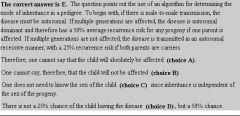
*THERE IS A 50% CHANCE OF THE CHILD HAVING THE DISEASE.
|
|

*OL 2223
|

*ABNORMAL FOLDING RESULTING FROM BINDING OF SMALL CHAPERONE PROTEINS.
--REST OF EXPLANATION: *CHOICE D: Choice D is incorrect because loss of the SRP (Signal Recognition Particle) signal sequence would prevent the protein from entering the RER efficiently in the first place, but would not prevent it from exiting the RER. Signal recognition particle (SRP) binds to the N-terminal amino acid signal sequence during the initial synthesis of proteins destined for the plasma membrane or the organelles of the endocytic or exocytic pathways. Such proteins being synthesis on free ribosomes, but SRP binding to the newly synthesized N-terminal signal sequence arrests synthesis to provide time for the complex to bind to an SRP receptor on the RER. Upon binding, small GTP protein activities in both SRP and the SRP receptor mediate binding to a ribosomal receptor and release of SRP, which allows protein synthesis to continue simultaneously with proper insertion into the RER membrane or RER lumen. *CHOICE E: Choice E is incorrect because the presence of terminal mannose-6-phosphate residues targets soluble enzymes for delivery to lysosomes, and the LDL receptor is expressed on the cell surface. |
|

*ol 1427
|
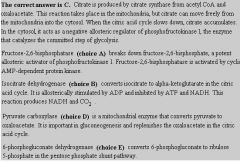
*Phosphofructokinase I
|
|

*ol 1281
|

*SUBLINGUAL GLAND
|
|

*OL 1151
|

*ZONA PELLUCIDA
|
|

*OL 532
|

*DIPLOTENE STAGE OF THE 1ST MEIOTIC DIVISION
|
|

*OL 1670
|

*DELIVERY OF LYSOSOMAL ENZYMES TO THE LYSOSOMES IN EPITHELIAL CELLS.
|
|

* 1167
|

*GROWTH OF EPIDERMIS FROM HAIR FOLLICLES AND SWEAT GLANDS IN THE DERMIS
|
|

*OL 1878
|
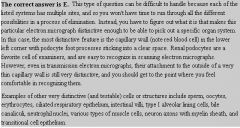
*URINARY TRACT
|
|

*OL 1662
|
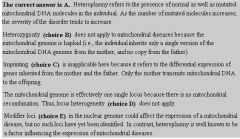
*HETEROPLASMY
|
|

*OL 193
|
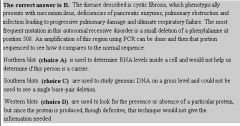
*PCR AND SEQUENCING
|
|

*OL 1803
|
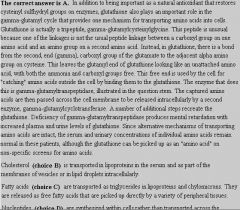
*AMINO ACID TRANSPORT
--REST OF EXPLANATION: *CHOICE D: Nucleotides are synthesized within cells rather than transported across the plasma membrane. *CHOICE E: Sugar transport involves a variety of enzymes on the intestinal brush border that specialize in breaking down disaccharides, such as lactose and sucrose, and transporting glucose, galactose, and fructose. |
|
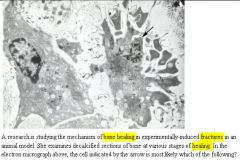
*OL 771
|

*APOPTOTIC CELL
|
|
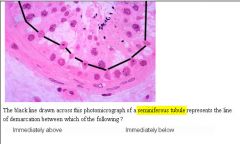
*OL 1302
|

*IMMEDIATELY ABOVE:
CELLS UNDERGOING SPERMATOGENESIS *IMMEDIATELY BELOW: VASCULAR SYSTEM |

